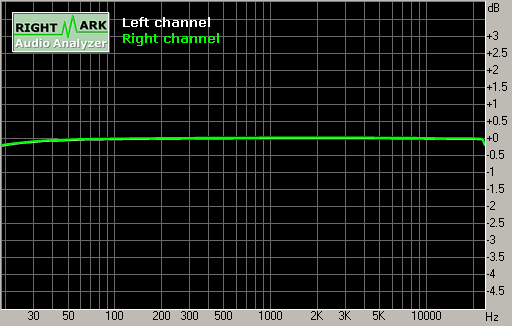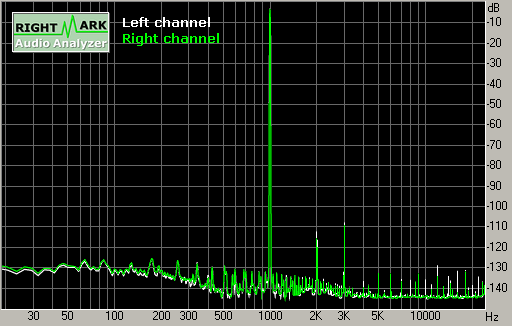Creative X-Fi: A New World of Sound
Behavior At 24 Bits / 48 KHz
With 24-bit quantification and a sampling rate of 48 kHz, the card begins to show what it can really do. These settings are an especially good compromise between performance and reasonable file size. As a matter of fact, they're frequently used in professional applications. Dynamics and signal-to-noise ratio naturally jump much higher.
- Frequency response (20 Hz - 20 kHz) : +0.01, -0.19 dB
- Weighted signal-to-noise ratio : 112.6 dB(A)
- Distortion : 0.0005%
- Stereo separation : 101.2 dB
Frequency response : The frequency response widens very slightly at the top and is obviously still perfectly linear...
Noise level : 24-bit quantification shows the card's limits, with an extremely low noise level
Dynamic range : Dynamic capacity reached the maximum value possible given the other parameters!
Distortion : Distortion as such is on the same order as what we observed at 44 kHz. The lower noise level is what explains the difference in the figures (THD+N).
Intermodulation distortion : Values are still infinitesimal and there's no danger of distortion being audible
Stereo separation : There was a (relative) increase in stereo crosstalk in the upper part of the spectrum, but it's off the graph, below 1 kHz...
Get Tom's Hardware's best news and in-depth reviews, straight to your inbox.
Current page: Behavior At 24 Bits / 48 KHz
Prev Page Behavior At 16 Bits / 44.1 KHz Next Page Behavior At 24 Bits / 96 KHz




